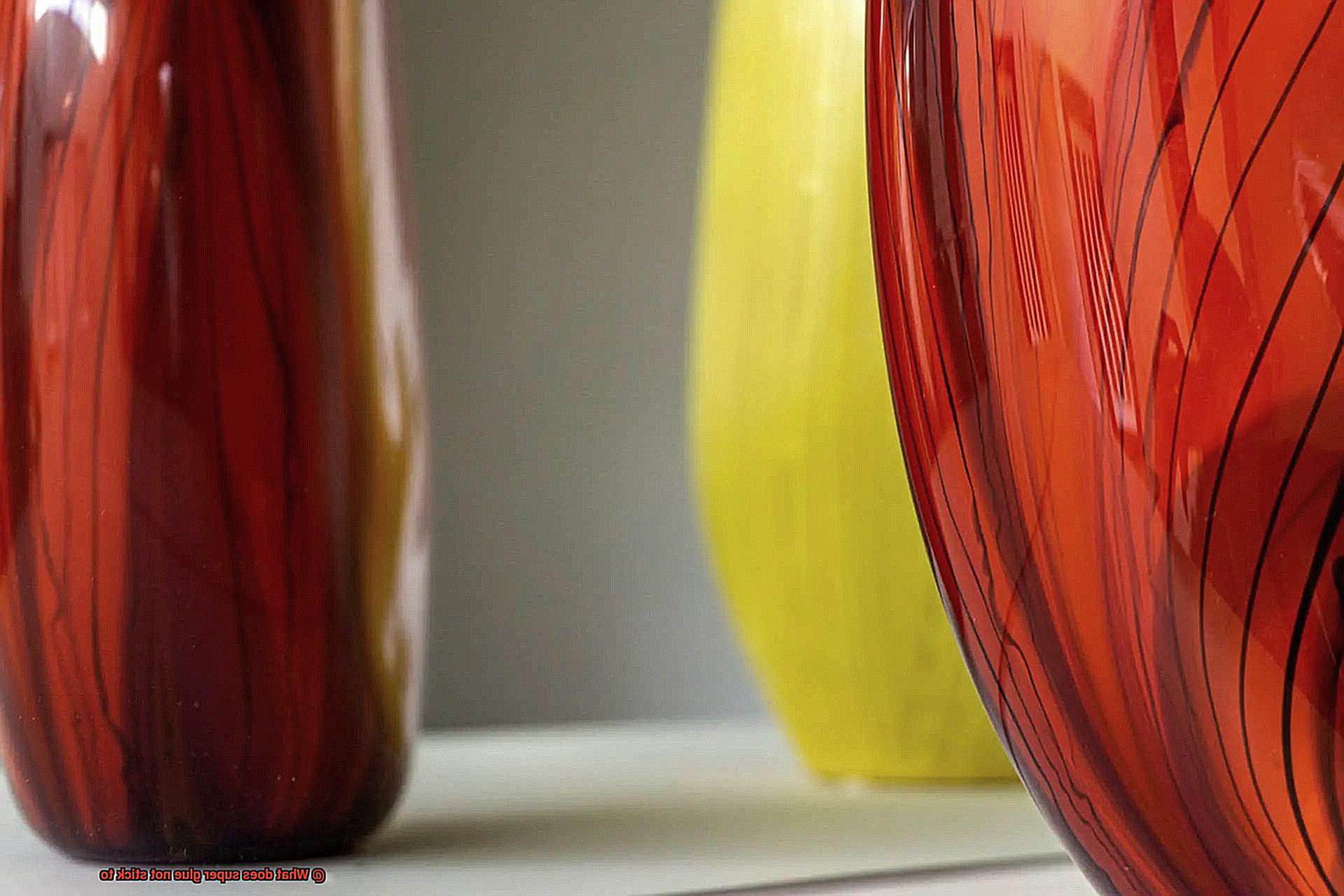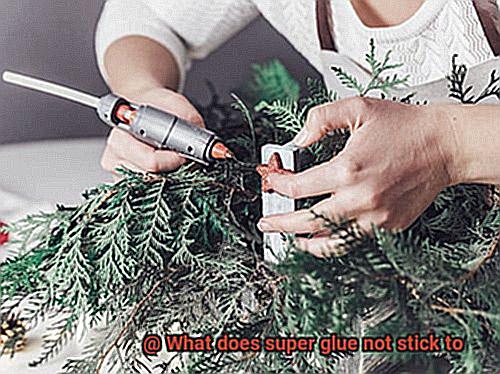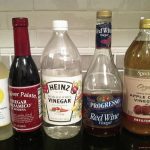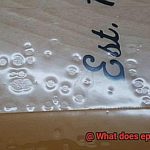Ever wondered if there are materials out there that can defy the mighty grip of super glue? Well, get ready to have your mind blown. In this blog post, we’re diving headfirst into the captivating world of what super glue refuses to stick to.
While this adhesive seems like it can bond anything and everything, there are some sneaky materials that manage to slip through its sticky grasp.
From peculiar surfaces to unexpected substances, we’re about to unveil the secrets and amaze you with the astonishing resilience of certain materials against this powerful adhesive. So buckle up and prepare for an eye-opening exploration of what super glue just can’t hold on to.
What is Super Glue?
Contents
Super glue, also known as cyanoacrylate adhesive, is a remarkable adhesive that has revolutionized the world of bonding. With its fast-acting and strong bonding properties, this versatile adhesive has become a go-to solution for various applications. In this blog post, we will explore what super glue is, its uses, advantages, considerations, and the story behind its accidental discovery.
What is Super Glue?
Super glue is a type of adhesive composed of a liquid monomer called cyanoacrylate. When exposed to moisture, such as water vapor or the moisture on the surfaces being bonded, it undergoes a chemical reaction and forms a strong bond quickly. This adhesive was accidentally discovered by Dr. Harry Coover Jr. in 1942 while he was working on developing a clear plastic for gun sights during World War II.
Versatile Applications:
Super glue’s versatility lies in its ability to bond various materials together. Whether you’re working on crafts, household repairs, or industrial projects, super glue can be your trusted companion. It bonds materials like metal, plastic, rubber, ceramic, wood, and even some fabrics. Its strong bond makes it ideal for quick fixes and repairs.
Advantages:
Apart from its strong bonding capabilities, super glue offers additional benefits. It dries clear, making it ideal for applications where aesthetics matter. Unlike other adhesives that leave a visible residue, super glue creates seamless bonds that are practically invisible to the eye. Additionally, super glue is resistant to heat and most chemicals, making it suitable for high-temperature environments or situations involving exposure to harsh substances.
Considerations:
While super glue is a powerful adhesive, it does have some limitations. It may not adhere well to certain materials like polyethylene, polypropylene, Teflon (PTFE), silicone, oily or greasy surfaces, and porous materials like wood or fabric. It’s crucial to choose the right adhesive for these materials or prepare the surfaces properly before applying super glue. This may involve roughening the surface or using a specialized primer.
Why Does Super Glue Not Stick to Certain Materials?
Today, we embark on a journey into the world of adhesive science to unravel this intriguing phenomenon. Fasten your seatbelts and prepare for a captivating exploration.
Surface Contaminants:
Super glue demands cleanliness. Oils, dirt, and moisture act as devious barriers, preventing the glue from forming a strong bond. Before applying that precious drop of glue, ensure the surface is meticulously cleaned. This step is crucial for optimal adhesion.
Porosity Predicament:
Super glue thrives in tiny crevices and pores, forging a robust bond. However, when faced with smooth or non-porous surfaces, there is insufficient surface area for the glue to grip onto, resulting in a weak bond. Sorry, sleek materials.
Pesky Plastics:
Polyethylene and polypropylene plastics pose a formidable challenge for super glue. These mischievous materials possess low surface energy, making it arduous for the glue to adhere properly. Fear not. Specialized polyolefin adhesives are here to save the day and conquer these tricky plastics.
Slippery Silicone:
Silicone rubber presents another tough opponent for super glue. With its low surface energy and affinity for releasing agents, silicone rubber scoffs at regular glue. To tame this formidable adversary, silicone adhesives or specialized bonding agents designed specifically for silicone rubber are necessary.
Metal Matters:
Even metals like aluminum and stainless steel can give super glue a run for its money. The oxide layer present on their surfaces acts as an impenetrable shield, preventing direct contact with the glue. Fear not, metalheads. Roughening or sanding the surface can provide super glue with a fighting chance.
Chemical Incompatibility:
Some materials refuse to dance with super glue due to their low chemical reactivity. Glass, with its robust chemical bonds, and Teflon (polytetrafluoroethylene), the nonstick champion, are two such examples. Super glue simply cannot break through their tough defenses, resulting in a weak or nonexistent bond.
Polyethylene and Polypropylene Plastics
Polyethylene and polypropylene plastics are two popular types of plastics known for their durability, flexibility, and resistance to chemicals. However, when it comes to bonding these plastics with super glue, things can get a little tricky.
The unique properties of polyethylene and polypropylene play a significant role in their inability to adhere well to super glue.
Firstly, both polyethylene and polypropylene have a low surface energy. This means that their surfaces are not very receptive to bonding with other substances. Super glue relies on a process called polymerization to form strong bonds.
It needs a surface that can provide enough grip for the adhesive molecules to interact and bond effectively. Unfortunately, the smooth surfaces of polyethylene and polypropylene do not offer the necessary grip, resulting in poor adhesion.
Another factor that affects the bonding ability of super glue is the non-polar nature of polyethylene and polypropylene. These plastics have a molecular structure that lacks positive or negative charges on their surface. Super glue contains molecules with a positive charge that attract the negative charge on a polar surface, facilitating bonding. However, since polyethylene and polypropylene lack this polarity, the adhesive cannot form a strong bond.
Furthermore, both polyethylene and polypropylene plastics are highly flexible. They can withstand bending and stretching without breaking, which is why they are commonly used in applications that require flexibility. However, this flexibility makes it difficult for super glue to maintain a strong bond. The constant movement and stress can cause the adhesive to crack or break, weakening the bond.
Fortunately, there are specialized adhesives available that are designed specifically for bonding polyethylene and polypropylene plastics. These adhesives have formulations that allow them to overcome the challenges posed by low surface energy and flexibility. They provide stronger and more durable bonds compared to regular super glue.
Teflon
Teflon, the magical substance that keeps our frying pans nonstick, has a secret power that makes super glue cry in defeat. But fear not, dear readers, for I am here to unravel the mystery of this fascinating phenomenon.
So, let’s dive right in and talk about Teflon. We all know it as the superhero of cookware, but did you know it has a secret identity? Teflon is actually a type of polymer called polytetrafluoroethylene (PTFE). What makes it so special is its low surface energy, which gives it a smooth and slippery surface. It’s like Teflon is coated in a layer of ice, making it impossible for super glue to find a solid grip.
Super glue, or cyanoacrylate adhesive, is designed to bond with a wide range of surfaces. It forms strong molecular bonds with most materials, but when it meets Teflon, it’s like trying to stick two magnets together with their same poles. The low surface energy of Teflon acts as an impenetrable force field, preventing the adhesive from creating a strong bond. Instead, all you get is a feeble connection that could break at the slightest touch.
But don’t lose hope just yet. There are brave adhesives out there that have accepted the challenge of bonding with low surface energy materials like Teflon. These specialized adhesives contain secret ingredients that boost their ability to adhere to such slippery surfaces. They are the heroes we need when Teflon stands in our way.
To sum it all up, Teflon’s low surface energy makes it invincible against the stickiness of super glue. While super glue may be the go-to solution for most surfaces, it simply doesn’t have what it takes to conquer Teflon. But worry not. The specialized adhesives are here to save the day and create strong bonds with our slippery superhero.
Silicone
In the realm of adhesive bonding, finding the perfect match can be a quest filled with challenges. Super glue, the valiant hero of DIY projects, is renowned for its formidable strength. However, when faced with the smooth and non-porous surface of silicone, even this mighty ally finds itself powerless. In this article, we will delve into the depths of silicone’s unique properties and explore why super glue fails to form a lasting bond. But fear not, for there are specialized adhesives that rise to the occasion, armed with secret ingredients capable of conquering this unbreakable challenge.
The Enigma of Low Surface Energy:
Silicone possesses an enigmatic quality called low surface energy. This attributes an incredibly smooth and non-porous surface to silicone, making it a formidable adversary for adhesives. Super glue, with its high surface tension, struggles to penetrate silicone’s impenetrable force field. It’s like attempting to stick a magnet to a polished glass surface – a futile endeavor that yields no results.
Defying Chemical Resistance:
To compound the challenge further, silicone boasts impressive chemical resistance, able to withstand the chemicals found in super glue without compromising its structural integrity. While super glue may initially adhere to silicone, the bond weakens over time due to this chemical resistance. Picture constructing a sandcastle on a shore caressed by relentless waves – the foundations crumble under the constant assault.
Specialized Adhesives: Champions of Silicone Bonding:
Fortunately, specialized adhesives have emerged as champions capable of overcoming silicone’s formidable nature. These brave heroes are armed with secret ingredients specifically designed to enhance adhesion and create durable bonds with silicone materials. They possess an intimate understanding of silicone’s unique properties and have undergone rigorous training to triumph over its low surface energy and chemical resistance.
Seeking the Perfect Match:
If you find yourself in need of bonding silicone materials, it is crucial to seek out these specialized adhesives. Look for products explicitly labeled as suitable for silicone bonding. These adhesives have undergone exhaustive testing and development to ensure optimal performance. By selecting the right adhesive, you unlock the true potential of silicone and forge unbreakable connections.
Oily or Greasy Surfaces
We’ve all experienced the frustration of trying to bond surfaces with super glue, only to find that it just won’t stick to oily or greasy surfaces. In this blog post, we will explore the difference between oily and greasy surfaces and understand why they pose a challenge for super glue bonding.
The Nature of Oils and Greases
Oils and greases are hydrophobic substances that repel water. This hydrophobic nature makes it difficult for super glue, which contains water as one of its components, to bond effectively. The presence of oil or grease creates a barrier that prevents direct contact between the glue and the intended surface.
Slippery Surfaces and Reduced Friction

Oils and greases act as lubricants, creating a slippery surface. This slippery barrier reduces the friction required for a solid bond, making it difficult for the glue to establish a strong grip. The molecules in oil or grease create a smooth and slick surface that hinders adhesive contact and bonding.
Surface Preparation for Improved Adhesion
Thoroughly cleaning the surface with a degreaser or rubbing alcohol removes oil or grease residues, allowing the adhesive to make direct contact. Additionally, roughening the surface slightly with sandpaper creates microscopic scratches or grooves, increasing the points of contact between the glue and the surface.
Specialized Formulas for Oily or Greasy Surfaces
Some super glue formulations are specifically designed to adhere to oily or greasy surfaces. These specialized formulas often contain additional chemicals or additives that help break down the oil or grease, enabling effective bonding.
Porous Materials such as Wood and Fabric
Brace yourself for a sticky situation when it comes to porous materials like wood and fabric. These surfaces can put your adhesive skills to the test, but don’t worry. In this blog post, we’ll delve into the challenges of using super glue on porous materials and share tips and tricks to help you achieve an unbreakable bond.
The Porous Predicament:
Let’s start by unraveling why super glue struggles with porous materials. Its adhesive prowess lies in bonding with the applied surface. Unfortunately, porous materials like wood and fabric create obstacles. The tiny pores in wood and the woven fibers in fabric hinder the glue from penetrating deeply enough to form a strong bond.
Wood Woes:
Wood, with its own set of quirks, poses a unique challenge for super glue. Its small pores make it difficult for the glue to seep in and create a solid bond. To make matters worse, natural oils and moisture in wood further impede the bonding process. Different types of wood have varying levels of porosity, requiring tailored approaches for each case.
The Fabric Fiasco:
Fabric presents its own adhesive hurdles. The woven fibers create tiny gaps and spaces within, making it tough for super glue to grab hold. Instead of penetrating these fibers, the glue might end up merely sticking to the surface, resulting in a weak bond.
Tackling the Challenge:
Now that we understand the challenges, let’s dive into solutions. Proper surface preparation is key to enhance bonding strength between super glue and porous materials. Start by thoroughly cleaning the surface to remove dirt, oils, or other substances hindering adhesion.
Lightly sanding the surface creates a rougher texture, providing more area for the glue to adhere to. This step is especially useful for wood, as it opens up the pores and allows the glue to penetrate deeper.
In some cases, using a specialized primer formulated for porous materials works wonders. These primers penetrate the material’s pores, strengthening the bond with super glue. Applying a thin layer of primer before using the glue significantly improves its effectiveness on porous surfaces.
The Final Word:
While these precautions enhance bonding strength, remember that super glue may still face challenges with certain porous materials. Material nature and porosity greatly influence adhesive properties. Always perform a small test in an inconspicuous area before committing to larger surfaces for a strong bond. And don’t forget, exploring alternative adhesives designed for porous materials may be a better option for specific applications.
Moisture
Moisture, the formidable nemesis of super glue. This powerful adhesive is known for its ability to bond almost anything together, but when it encounters moisture, its strength wanes.
To understand why, let’s delve into the science behind it all. Super glue relies on a chemical reaction to create its incredible bond. When it comes into contact with a surface, strong molecular forces form between the glue and the material, forging a tight connection. But here’s where moisture becomes a disruptive force.
Imagine water molecules acting as little soldiers, forming a protective barrier between the glue and the surface. They prevent the two from making contact and creating that beloved super-strong bond. This interference hampers the glue’s ability to adhere properly, resulting in a weaker or even nonexistent bond.
But moisture’s mischief doesn’t end there. It can also cause the glue to cure unevenly or more slowly. Even if you manage to achieve some bonding action, it may not be as reliable or long-lasting as desired. Who wants their glued items falling apart prematurely?
So, how can you combat this moisture menace? First and foremost, ensure both the surface and the glue are dry before attempting to bond materials. This simple step can make all the difference in achieving a robust bond. If moisture is unavoidable, consider using a specialized adhesive designed for wet or damp conditions.
It’s important to note that certain materials are more susceptible to moisture-related issues when using super glue. Wood, paper, fabric, and certain types of plastic are just a few examples. These materials can absorb moisture, compromising the bond over time and causing separation.
To navigate these challenges successfully, always consult the manufacturer’s instructions for specific information on how super glue interacts with different materials in relation to moisture. Their expertise will guide you towards optimal results.
GvWoqfr-_cE” >
Conclusion
In conclusion, super glue is a marvelously versatile adhesive, capable of bonding an array of materials together with its mighty grip. However, there exist certain materials that present a formidable challenge to this powerful adhesive’s tenacity. Surfaces coated in oils or greases prove to be slippery adversaries, creating a barrier that thwarts direct contact between the glue and the surface, ultimately diminishing adhesion. Porous materials such as wood and fabric boast minuscule pores and intricate woven fibers, making it arduous for the glue to penetrate deeply enough to establish a robust bond.
Silicone, with its low surface energy and chemical resistance, emerges as an indomitable foe against super glue’s clutches. Polyethylene and polypropylene plastics exhibit low surface energy and lack polarity, rendering them formidable opponents for super glue’s affixing abilities. Teflon, with its low surface energy acting as an impenetrable force field, resists even the most valiant attempts from super glue.
Alas, moisture emerges as another formidable adversary in this battle of adhesion. It disrupts the critical chemical reaction that forms the bond between the glue and the material. This interference prevents direct contact between the two entities, resulting in weaker bonds or no bonding at all.
Fear not. Despite these daunting challenges, there exists a pantheon of specialized adhesives tailored specifically for each material type. These extraordinary concoctions possess formulations meticulously crafted to augment adhesion on their respective surfaces, bestowing upon us stronger and more enduring bonds.
When embarking on a project involving super glue, it becomes paramount to prepare surfaces diligently by subjecting them to thorough cleaning and roughening if necessary. Additionally, adhering closely to manufacturer instructions while employing specialized adhesives when warranted shall ensure optimal results.






